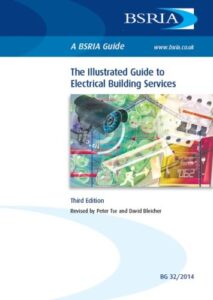The Illustrated Guide to Electrical Building Services
The Illustrated Guide to Electrical Building Services
The Illustrated Guide to Electrical Building Services provides basic reference information on electrical building services systems for construction clients, and professionals in other areas of the construction industry.
For construction clients, this guide provides a simple insight into the main system options discussed during the briefing process and can consequently assist dialogue with the design team. It can also help clients to identify and raise technical questions which they feel are relevant to their organizations specific needs. For construction professionals, the guide provides a quick reference to electrical building services systems and can assist their working knowledge of the subject.
You can also Read Rules of Thumb – Guidelines for building services 5th Edition
The Illustrated Guide to Electrical Building Services Content
- POWER
![The Illustrated Guide to Electrical Building Services The Illustrated Guide to Electrical Building Services]()
- ON-SITE GENERATION
- DISTRIBUTION
- LIGHTING
- FIRE & SECURITY
- OTHER
- Electric Shock
- Power Quality
- Power Factor
- Structured Cabling
- Temporary Electrical Supplies for Construction Sites
- Inspection, Testing and Maintenance
- Codes and Legislation
- Basic Electrical Theory
The electrical supply to buildings originates primarily from power plants, which generate electricity from other forms of energy such as coal, natural gas and nuclear. The remainder generated from renewable sources such as hydroelectric and wind power.
In a typical power plant, a primary energy source such as coal burned to create heat. This heats water in a furnace under pressure to create pressurized steam to drive a turbine, which is connected to a generator. The turbine turns a wire coil inside the generator at 50 cycles per second (50 Hz) to produce three-phase electricity, at 25 kV alternating current (AC).
Most buildings, most of the time, get their electricity from the grid. However an increasing number of buildings are incorporating on-site generation of electricity. Some forms of on-site generation considered renewable energy sources, and are commonly implemented as a way of reducing energy use and carbon dioxide emissions. Only two are discussed here: Photovoltaics and Combined Heat and Power (CHP).


Comments are closed.